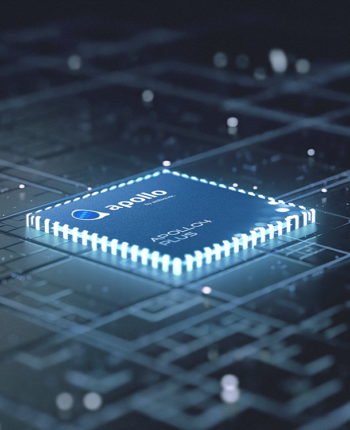The Single Best Strategy To Use For Ambiq apollo 3 datasheet
The Single Best Strategy To Use For Ambiq apollo 3 datasheet
Blog Article

Hook up with a lot more gadgets with our large choice of low power communication ports, which include USB. Use SDIO/eMMC For added storage that can help fulfill your software memory demands.
8MB of SRAM, the Apollo4 has much more than enough compute and storage to deal with elaborate algorithms and neural networks when displaying vivid, crystal-clear, and easy graphics. If supplemental memory is necessary, external memory is supported by way of Ambiq’s multi-bit SPI and eMMC interfaces.
Enhancing VAEs (code). In this particular function Durk Kingma and Tim Salimans introduce a flexible and computationally scalable technique for improving the accuracy of variational inference. Specifically, most VAEs have up to now been properly trained using crude approximate posteriors, wherever every single latent variable is independent.
Additionally, the included models are trainined using a considerable assortment datasets- using a subset of Organic alerts which can be captured from just one human body area for example head, chest, or wrist/hand. The target should be to enable models that may be deployed in real-planet professional and buyer applications which have been feasible for lengthy-term use.
extra Prompt: A pack up check out of the glass sphere which has a zen backyard within it. You will find a modest dwarf from the sphere that's raking the zen backyard garden and developing styles inside the sand.
Much like a bunch of authorities would've recommended you. That’s what Random Forest is—a list of determination trees.
neuralSPOT is constantly evolving - if you prefer to to lead a functionality optimization tool or configuration, see our developer's guide for ideas regarding how to best lead towards the challenge.
That’s why we feel that Mastering from true-planet use is usually a critical ingredient of making and releasing more and more Safe and sound AI systems over time.
This real-time model is in fact a group of three separate models that get the job done collectively to put into practice a speech-centered consumer interface. The Voice Action Detector is compact, economical model that listens for speech, and ignores every little thing else.
Precision Masters: Info is much like a fine scalpel for precision medical procedures to an AI model. These algorithms can process enormous information sets with excellent precision, getting patterns we might have skipped.
AMP’s AI platform employs Pc eyesight to acknowledge designs of precise recyclable elements within the commonly complicated waste stream of folded, smashed, and tattered objects.
There are actually cloud-based mostly solutions including AWS, Azure, and Google Cloud offering AI development environments. It truly is dependent on the character of your challenge and your ability to use the tools.
Prompt: This shut-up shot of the Victoria crowned pigeon showcases its striking blue plumage and red chest. Its crest is crafted from sensitive, lacy feathers, although its eye is really a putting crimson shade.
This includes definitions used by the remainder of the data files. Of distinct fascination are the following #defines:
Accelerating the Development of Optimized AI Features with Ambiq’s neuralSPOT
Ambiq’s neuralSPOT® is an open-source AI developer-focused SDK designed for our latest Apollo4 Plus system-on-chip (SoC) family. neuralSPOT provides an on-ramp to the rapid development of AI features for our customers’ AI applications and products. Included with neuralSPOT are Ambiq-optimized libraries, tools, and examples to help jumpstart AI-focused applications.
UNDERSTANDING NEURALSPOT VIA THE BASIC TENSORFLOW EXAMPLE
Often, the best way to ramp up on a new software library is through a comprehensive example – this is why neuralSPOt includes basic_tf_stub, an illustrative example that leverages many of neuralSPOT’s features.
In this article, we walk through the example block-by-block, using it as a guide to building AI features using neuralSPOT.
Ambiq's Vice President of Artificial Intelligence, Carlos Morales, went on CNBC Street Signs Asia to discuss the power consumption of AI and trends in endpoint devices.
Since 2010, Ambiq has been a leader in Apollo 3.5 blue plus processor ultra-low power semiconductors that enable endpoint devices with more data-driven and AI-capable features while dropping the energy requirements up to 10X lower. They do this with the patented Subthreshold Power Optimized Technology (SPOT ®) platform.
Computer inferencing is complex, and for endpoint AI to become practical, these devices have to drop from megawatts of power to microwatts. This is where Ambiq has the power to change industries such as healthcare, agriculture, and Industrial IoT.
Ambiq Designs Low-Power for Next Gen Endpoint Devices
Ambiq’s VP of Architecture and Product Planning, Dan Cermak, joins the ipXchange team at CES to discuss how manufacturers can improve their products with ultra-low power. As technology becomes more sophisticated, energy consumption continues to grow. Here Dan outlines how Ambiq stays ahead of the curve by planning for energy requirements 5 years in advance.
Ambiq’s VP of Architecture and Product Planning at Embedded World 2024
Ambiq specializes in ultra-low-power SoC's designed to make intelligent battery-powered endpoint solutions a reality. These days, just about every endpoint device incorporates AI features, including anomaly detection, speech-driven user interfaces, audio event detection and classification, and health monitoring.
Ambiq's ultra low power, high-performance platforms are ideal for implementing this class of AI features, and we at Ambiq are dedicated to making implementation as easy as possible by offering open-source developer-centric toolkits, software libraries, and reference models to accelerate AI feature development.

NEURALSPOT - BECAUSE AI IS HARD ENOUGH
neuralSPOT is an AI developer-focused SDK in the true sense of the word: it includes everything you need to get your AI model onto Ambiq’s platform. You’ll find libraries for talking to sensors, managing SoC peripherals, and controlling power and memory configurations, along with tools for easily debugging your model from your laptop or PC, and examples that tie it all together.
Facebook | Linkedin | Twitter | YouTube Report this page